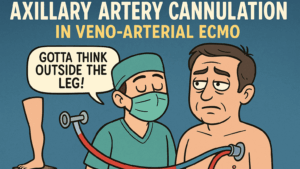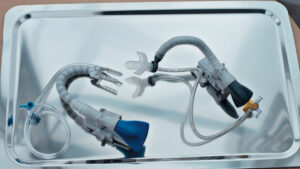Venoarterial extracorporeal membrane oxygenation (VA-ECMO) is a critical intervention for postcardiotomy cardiogenic shock when patients fail to wean from cardiopulmonary bypass. Despite its life-saving potential, it carries a high mortality rate ranging from 49% to 60.9%. Patients undergoing infective endocarditis (IE) surgery often require complex cardiac repairs, which increases the likelihood of postoperative cardiogenic shock and the need for VA-ECMO support. However, due to limited data, clinicians are often hesitant to use VA-ECMO in IE cases. This study, using data from the Netherlands Heart Registration (NHR) from 2013 to 2022, aims to determine the incidence and mortality of VA-ECMO after IE surgery while identifying key risk factors and clinical outcomes.
The study analyzed data from 3,468 IE surgeries across 15 Dutch heart centers between 2013 and 2022. A total of 49 patients, or 1.4%, required postoperative VA-ECMO, initiated intraoperatively. The study compared VA-ECMO patients with non-ECMO IE patients, including 49 total VA-ECMO cases, 24 of whom died in-hospital, and 3,419 non-ECMO patients, with 335 in-hospital deaths. The primary outcomes measured were in-hospital and one-year mortality, as well as postoperative complications such as renal failure, vascular complications, stroke, and rethoracotomy.
The incidence of VA-ECMO after IE surgery was 1.4%, with significantly higher mortality rates in patients requiring ECMO. In-hospital mortality was 49.0% in VA-ECMO patients compared to 9.8% in non-ECMO patients, while one-year mortality was 60.9% versus 15.2%. Most VA-ECMO deaths occurred in the intensive care unit, with 83.3% of patients not surviving beyond their ICU stay.
Several preoperative risk factors were identified for VA-ECMO use. Patients requiring VA-ECMO had a significantly higher EuroSCORE II, with a median score of 32.0 compared to 8.3 in non-ECMO patients. Renal function was notably worse, with a median estimated glomerular filtration rate (eGFR) of 57.0 ml/min/1.73m² compared to 70.2 ml/min/1.73m² in non-ECMO patients. These patients also had significantly higher rates of previous valve surgery, peripheral vascular disease, pulmonary hypertension, and poor left ventricular function. Emergency surgery was more common among VA-ECMO patients, as was the need for aortic root surgery and concomitant coronary artery bypass grafting.
Postoperative complications were more frequent in VA-ECMO patients compared to their non-ECMO counterparts. Renal failure occurred in 55.3% of VA-ECMO cases compared to 11.9% in non-ECMO patients. Vascular complications were significantly higher, affecting 12.5% of ECMO patients versus only 0.6% of non-ECMO patients. Rethoracotomy for cardiac tamponade was also more prevalent in ECMO patients at 38.1% compared to 12.7% in non-ECMO cases. Interestingly, there was no significant difference in stroke incidence between the two groups, with rates of 4.3% in ECMO patients and 3.8% in non-ECMO patients.
Predicting mortality among VA-ECMO patients proved difficult. In non-ECMO IE patients, mortality was linked to older age, female sex, chronic lung disease, and renal dysfunction. However, in VA-ECMO patients, no specific baseline predictors were strongly correlated with survival or mortality. This suggests that the traditional risk factors used to assess non-ECMO patients may not be as applicable to those requiring ECMO support.
Survival rates for VA-ECMO after IE surgery were found to be comparable to non-IE postcardiotomy VA-ECMO cases. The assumption that IE patients have significantly worse ECMO outcomes may not be accurate, as the study suggests that extended preoperative antibiotic therapy may help stabilize these patients before surgery. Current clinical guidelines often discourage the use of VA-ECMO in IE patients due to concerns about high mortality, but the data from this study indicate that these patients fare similarly to other postcardiotomy ECMO cases. Future research should focus on optimizing ECMO management strategies, including refining the duration of support, improving weaning protocols, and adjusting pharmacologic treatments for ECMO patients.
Study Ranking: 4/5 (High-Quality Study)
- Large nationwide dataset (3,468 cases), robust statistical analysis, comprehensive risk factor evaluation.
- Limitations: Lacks ECMO duration, weaning protocols, cause of death data.
- Overall: Significant contribution to ECMO decision-making in high-risk cardiac surgery.







